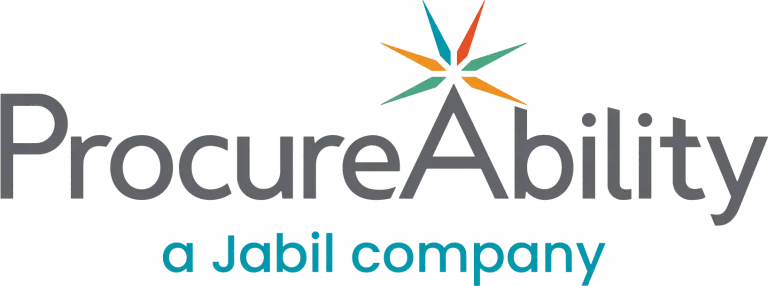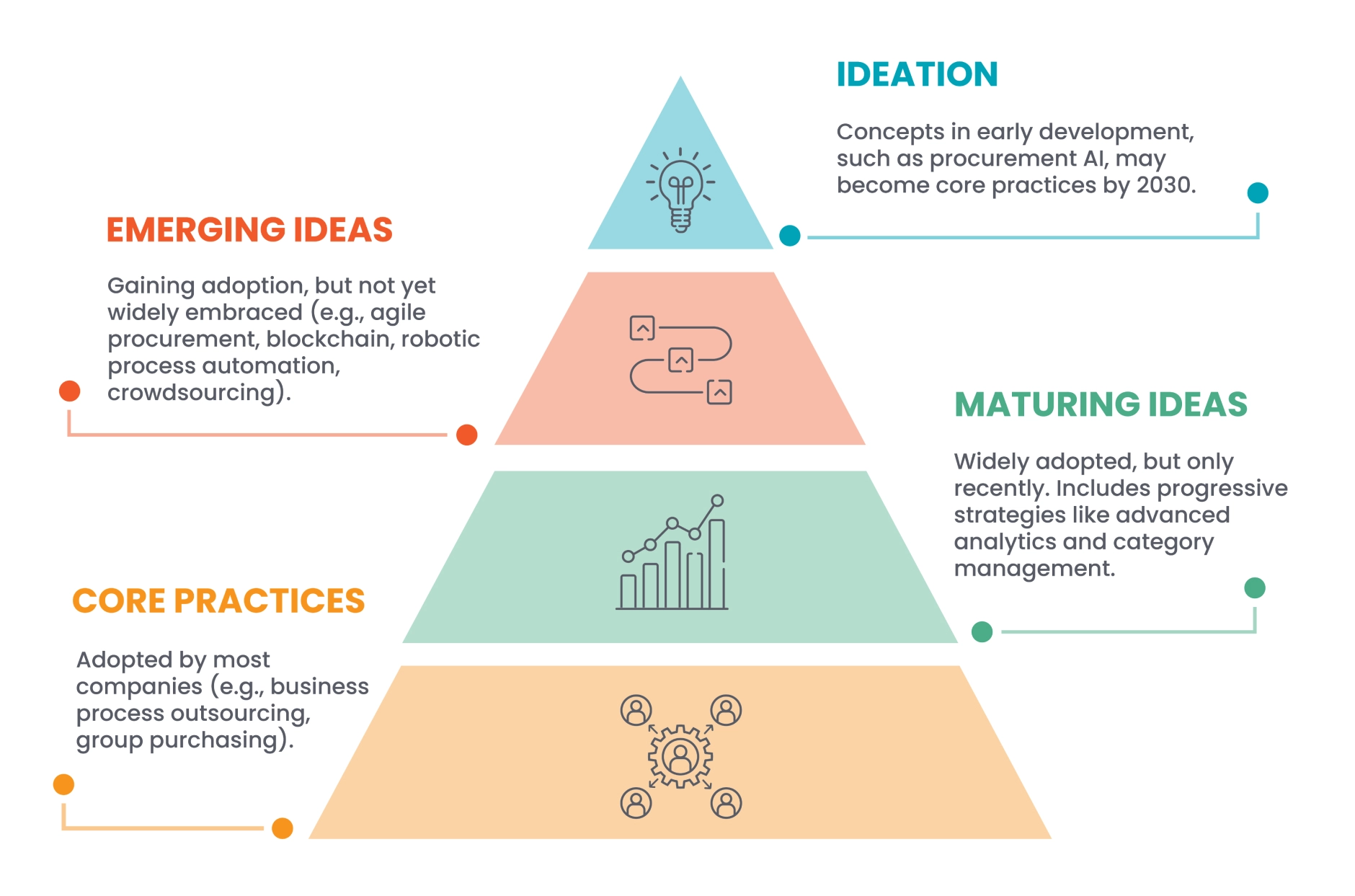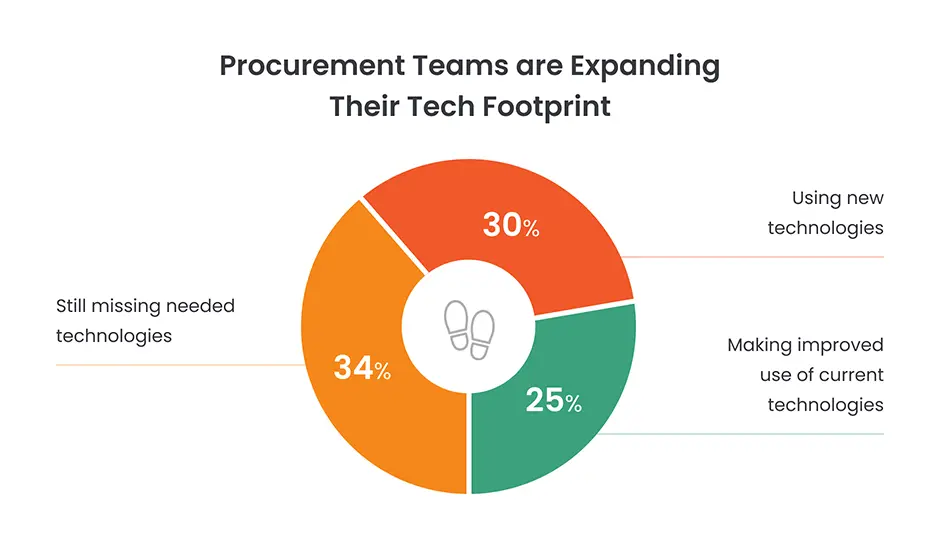During the formation of the ‘Bold Procurement Predictions for 2030′ Insights series, ProcureAbility closely examined how mature procurement teams are in adopting new practices and emerging trends. As a result, it became clear that organizations vary widely in their adoption of processes and technologies. While some remain focused on core practices, others—a small group of innovators—actively explore ways to leverage supply chain technology. Consequently, ProcureAbility concentrated its effort on the top of the pyramid: ideation.
In this Insights series, ProcureAbility highlights five emerging trends that procurement organizations should expect to move from the top of the pyramid to the bottom by 2030. These trends include advanced crowdsourcing, accelerated procurement technology, cognitive computing, hyper cybersecurity, and virtual organizational design.
Procurement Technology Acceleration
ProcureAbility is excited to release its ‘Bold Procurement Predictions for 2030’ Insights series. This series is designed to help Chief Procurement Officers navigate the changing landscape. The series highlights emerging practices likely to become common by the end of the decade. These include advanced crowdsourcing, accelerated procurement technology, cognitive computing, hyper cybersecurity, and virtual organizational design.
In this edition of the ‘Bold Procurement Predictions for 2030’ Insights series, we present findings from extensive research and input from a supply chain expert think tank. The series examines how rapid technology acceleration is expected to shape procurement practices by the end of the decade. Moreover, Chief Procurement Officers are already re-evaluating processes. Nearly one in four cites digital transformation as a top strategic initiative.1
Most mid- to large-size organizations already use e-procurement and e-sourcing software, and we expect adoption to grow rapidly in the coming years. Artificial intelligence (AI), machine learning (ML), and predictive analytics will transform many administrative tasks. These major shifts in procurement technology will reshape how teams conduct business. Below are some emerging technologies we expect to reach mainstream adoption by 2030:
What Now?
IT executives must first begin investing in technologies and systems that will prepare their staff for the new standards likely to be widespread within ten years. Next, they should test and evaluate these innovative technologies. This will help procurement experts become familiar with them and understand how they fit into the organization. Additionally, they should foster an internal culture that encourages experimentation and adoption of innovation. Ultimately, a technology implementation that is well-planned, deliberate, and sensible today can lead to a streamlined procurement process by 2030.
Next in the ‘Bold Procurement Predictions for 2030’ Insights series: Cognitive Computing
Sources
1Ardent Partners, Procurement Metrics That Matter in 2022, June 2022
2Valuates Reports, Extended Reality Market to Grow USD $67.87 million by 2028 at a CAGR of 15.0%, 10 June 2022






